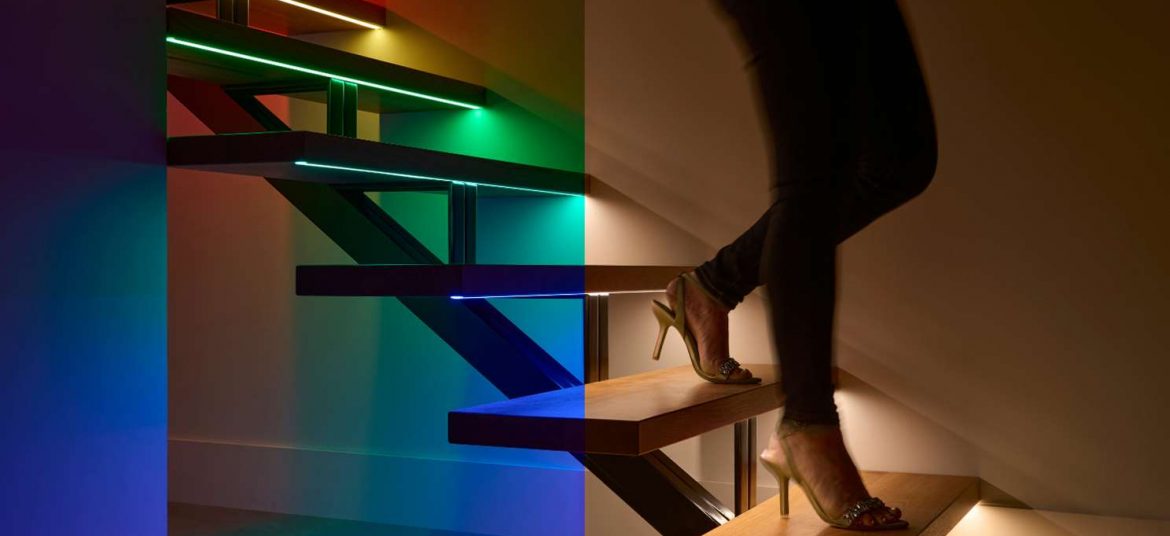We enjoy all our home automation projects here at MDfx, but there’s no point in hiding it: home cinema installation is our absolute favourite! When else do you get to think about bringing your favourite characters from the silver screen to life? Or geek out on the latest tech upgrades to screens, projectors, and speakers?
We’ve looked through our home automation case studies and picked 3 of our favourite home cinema designs.
1. Hiding your home cinema when it’s not in use
The ideal home cinema is in your living room. It’s the relaxing part of your home. It’s the place where people come together to be entertained and watch a film. Often, the problem is, you don’t want your living room to look like a cinema all the time. The ambience of a cinema is very different from a typical living room.
The solution, of course, is a hidden home cinema design. One that magically appears at the press of a button. A motorised drop-down projector screen, by a company such as Vutec, will go unnoticed until you’re ready to put on a film. For extra flair, you can have motorised blinds come down automatically when the projector comes down. This is a great touch as it blocks out external light allowing you to concentrate on the film.
We completed a home cinema design in Hampstead that included all these features and more. When not in use as a home cinema, the living room had a regular 65″ Panasonic television. The audio came from an incredible set of B&W speakers, hidden within the joinery.
2. Home cinema with no visible black boxes or wiring
Your home cinema design should be a part of your plans for a room — not an afterthought. We’ve seen plenty of cases where an interior designer’s hard work is ruined by a poorly placed television and a thick bundle of cables. It doesn’t have to be that way.
You can hide all your black boxes by installing them in a cupboard or a rack, such as the ones sold by Middle Atlantic. The rack can be hidden away neatly in joinery and can be easily rolled out to work on when needed.
For this smart home installation in Hyde Park we hid all of the back boxes and cables away. As well as the Middle Atlantic rack mentioned, we set up a series of Bowers and Wilkins speakers, Rotel amplifiers and a concealed subwoofer for good measure.
3. Use acoustically-transparent fabric for your home cinema design
Ordinary fabric will muffle or distort sound, while acoustically-transparent fabric will allow sound to pass through.To hide a big set of speakers from view, acoustically-transparent fabric is a great solution.
We used this technique for our home cinema installation in Kensington. Here we built a complete home cinema with a hidden JVC projector and a fixed Vutec screen. We hid a set of speakers behind the screen using acoustically transparent fabric.
Want to learn more about home cinema installation? Contact MDfx to ask a home cinema installation expert a question! Or give us a call on 01895 262 600 to arrange a free consultation.








